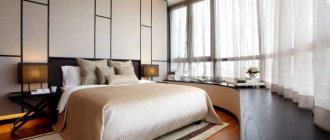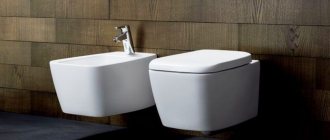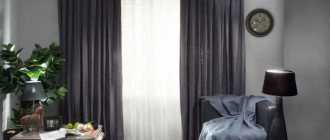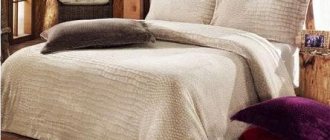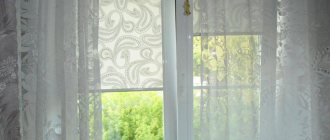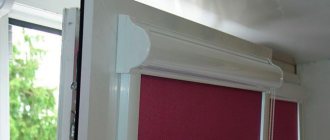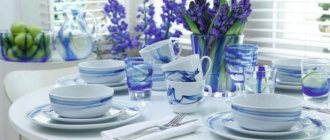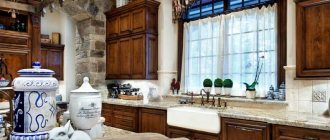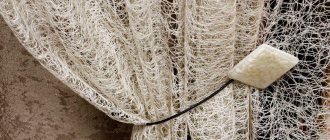Every year at the interior fair held in Milan, leading designers present new items that correspond to the current fashion. A modern interior should be stylish, so every interior design specialist tries to present the best work, using new fabrics and accessories, as well as developing an interesting design.
Tulle plays an important role in the interior, so it does not lose popularity and relevance. Textiles add coziness to the room, so plastic blinds and Roman blinds made of synthetic materials, despite their practicality, give way to light and airy tulles.
Curtains in a modern interior
How to choose the right tulle for the hall, what to look for and how to combine it with curtains and curtains? These are the questions that concern everyone who independently designs rooms.
Basic criteria for choosing tulle for the hall
Before you start choosing curtains for the main room of your house or apartment, you should familiarize yourself with the recommendations of interior designers. They advise taking into account important points.
Lighting and windows
This is the main thing that requires attention. The living room should have enough light, so it is better to give preference to light, pastel shades, including white. Bright curtains are suitable only for rooms with northern and western orientation, as well as for children's rooms. In a teenage boy's room, curtains in cold colors - all shades of blue and gray - would look appropriate.
The shape of the windows, their height and number dictate their own rules when selecting curtains. For example, if the opening is large, then tulle with a pronounced vertical pattern is suitable. It will balance the space and visually raise the ceiling. If the windows are located too low and there is a large distance above them to the ceiling, it makes sense to install a molding or wall-mounted cornice.
In typical apartment building projects, the living room often has access to a balcony. Therefore, it is important to properly decorate the living room with balcony windows and doors. It is appropriate to hang curtains and tulle curtains made from separate pieces of fabric here.
You might be interested in Description of sisal: production and use of material
Decorating the exit to the balcony
By functionality
You should choose tulle for the hall, taking into account natural light. If the windows face the east and south, then it is better to give preference to dense natural fabrics in light shades. They block bright sunlight, protecting furniture and other interior items from fading. Modern linen tulle can be used as a material. Tulle in the interior of rooms into which little light enters is best used from light transparent fabrics and meshes.
If curtains serve a decorative function, then it is important to choose the right color. It can be combined with the main accent of the interior, for example, the largest piece of furniture. Or, on the contrary, serve as a background. In this case, you should choose neutral shades - beige, milky, olive.
Sheer tulle in contrasting color
By interior style
The main room should be harmonious, so special attention should be paid to style. For classic and baroque interiors, tulle is suitable, design options for which allow the use of lambrequins, tiebacks, tassels, as well as gold threads and embroidery.
For minimalism and hi-tech, a curtain can become the main element of decor, so bright plain fabrics and textured materials of coarse weaving are allowed.
Provence, chalet, shabby chic require the selection of tulles with floral patterns and lace fabrics. Typically, patterned tulle in the interior duplicates other textile elements, for example, chair covers or sofa upholstery. The design of curtains for these styles allows the use of frills, draperies, and lace inserts
Lace
For ethnic style interiors, fabrics with a pronounced texture and large patterns are suitable. Tulle can be decorated with gold and rhinestones if the interior is designed in an Oriental style. For African ones, motifs with animals, bright and rich colors are suitable.
The Scandinavian style will be supported by tulle curtains in cool tones. Alternating transparent and matte stripes is appropriate here.
Important! When choosing tulle for rooms, pay attention to the combination of texture and color of curtains.
How to choose tulle
You need to choose a curtain for the living room along with the tulle for it. There are recommendations from designers who will tell you how to choose a set:
- If you put emphasis on a curtain, it itself is rich in color and patterns, then tulle plays the role of a background. Smooth one-color tulle is suitable for these purposes. In this case, a contrast effect is used - a dark, rich color of curtains and light tulle.
- In the case where curtains serve as an addition, feedback. The curtain material should be neutral and highlight the texture of the tulle.
By interior style
How to choose tulle and curtains for it, based on interior design? Here you need to rely on the style of the room:
- Minimalism requires simple elements, without unnecessary pretentiousness. In this case, the emphasis is on the texture of the fabrics.
Related article: Nuances when choosing curtains for a teenage boy: expert advice
- Classic and baroque, on the contrary, attract the use of lambrequins, flounces, and tiebacks. It is tulle in various variations that is used for such techniques.
- Provence, shabby chic, chalets require curtains using floral elements. Curtains with flowers and tulle with frills are appropriate here. Textiles are duplicated in interior details, pillows, bedspreads, chair covers.
- Ethnic style of various directions - here textiles play a significant role. The shape of the curtains itself should correspond to the theme.
- Indian style - heavy curtains with rich textures and rich colors. Tulle can be with gold thread or rhinestones.
- Japanese style consists of screen curtains made of smooth thin fabric or Roman linens.
- In the African style, you can use stylized fabrics and tulle made of threads. Natural fabrics are better suited.
By functionality
You should also select tulles based on their functionality. For the first and second floors of the house, it is important that the curtains isolate the room from prying eyes. Choose tulle, the curtains are better so that they are less see-through. These should be thick curtains and translucent lightweight fabric. Organza is most suitable.
The option when the curtains serve as decor in the hall involves many more different combinations. For example, tulle without curtains in the interior - it can be made of various materials (taffeta, muslin, mesh).
Lighting and windows
It is necessary to choose tulle for the hall, taking into account the lighting and the size of the windows. The most illuminated rooms have windows facing south and southwest. Therefore, the curtains here will play the role of a screen that diffuses the sun's rays. Curtains in rich colors are suitable. It is possible to use non-standard options. Brown tulle in the interior acts as a filter screen and shades the sun's rays.
If the windows face north, then not enough light enters the room. Here you need to use light shades. You can only hang tulle. Another option is to move a light curtain to the place of the curtains in the foreground, and light curtains to the traditional place of tulle. The window seems to go slightly deeper into the room.
Western and eastern windows provide the optimal light regime. But you still don’t need to darken the windows too much.
Heavy, dark curtains and thick tulle will make small windows even smaller. Therefore, only light colors are needed and the use of a light curtain that allows maximum light transmission (mesh, light taffeta). With large windows everything is much simpler; it is possible to decorate the windows based on the taste and purpose of the curtains.
Related article: Choosing Japanese curtains - pros and cons
It is recommended to use one rule: the color scheme of the curtains should be duplicated in the interior details. For hall curtains this is important, because this is the main room, it should be especially expressive. When choosing a curtain, at the same time selecting a tulle ensemble to match it.
A properly selected companion is the key to successful curtain design. In order to facilitate the choice, curtain salons offer ready-made options for combining curtains and tulle in sample collections.
Select fabric by color and material
The guidelines will be the color scheme of wallpaper and textiles, the general color scheme of the room, and the style of the room. You can use several options:
- If the windows are large, panoramic to the floor, and it is necessary to emphasize their significance, you can use only curtains so that the windows themselves are clearly visible.
- A classic of the genre - a combination of curtains and tulle. Here it is important to harmonize them with the interior and with each other.
- An option when tulle is in the foreground. In this case, curtains act more like a screen that covers the windows. The main emphasis falls on tulle. It should be interesting and expressive. The range of samples offered will allow you to implement any design solution.
- You should pay attention to the translucent curtain with photo printing. Thanks to this technique, any image is applied to a translucent material. It looks amazing and serves as a bright decorative element.
- One tulle is used. In this case, light window fabric is the queen of the ball. We choose the material, color, and texture so that the curtain best matches the intended interior solution.
If you have a living room-studio, then the kitchen is combined with the living room. The curtains should echo each other. It is not necessary to design the same, you can simply duplicate the fabrics.
Choosing the right material is the key to an interesting curtain solution for a window. The main translucent fabrics for tulle are organza, taffeta and mesh. In turn, they are divided according to structure and types into smooth, with patterns, with decorative inserts and elements.
Related article: Curtains with eyelets with tulle: types, care recommendations
On video: tulle: we understand materials and weaving.
There are several types of non-smooth fabrics:
- With drawings. Depending on the purpose of the room and the style, you can use tulle with a pattern or photo printing as a decorative element for window decoration. In this case, the windows will visually draw attention to themselves. Such a light curtain will decorate the interior of the living room.
- Lace tulle. Most suitable for Provence, shabby chic and art deco styles. Lace curtains create a homely feel. They look appropriate in the living room and kitchen.
- Textured fabrics. The main decorative element is the varied texture and thickness of the threads. These can be chaotic weaves of different thicknesses, knots, stripes running through the fabric and uneven paths. This also includes web tulle.
- Mesh fabrics. Fashion trend. The main advantage is that it transmits light from the window better. Different threads can be used, including silver and colored ones. Quite impressive and not standard.
- Thread tulle or muslin. These options have become a hit in the market. They are separate threads from different materials, collected into braids. They can be studded with beads, consist of multi-colored threads, in the form of silver rain, and so on. They often zone a room. It is better to use them separately or to make the curtains an inconspicuous background.
The variety of tulle textures and materials makes it possible to decorate the windows of the hall to suit every taste and implement any design solution. Based on our recommendations, you can easily choose the right option for the hall.
Expert advice (2 videos)
Tulle in the interior (36 photos)
Select tulle by color and material
Modern tulles are very diverse. This makes it possible to choose both luxurious curtains for a rich Baroque, Rococo and Art Nouveau interior, as well as inexpensive options for rooms decorated in the style of minimalism, hi-tech, and loft.
You might be interested in How to sew a pillow yourself using padding polyester
New technologies make it possible to create practical fabrics that are easy to care for.
The market offers materials such as:
- silk;
- organza;
- viscose;
- muslin;
- tulle;
- veil;
- nylon
However, today there is a tendency to prefer natural materials. Modern tulles made of linen and cotton fibers are suitable for eco-style interiors.
Pay attention to the weaving of the threads - fashionable tulle has a simple square weave like burlap with seals and knots.
Linen
Rules for choosing tulle for the living room
Beautiful tulle for the hall is an important element that requires maximum attention when decorating the interior.
Simple rules will help you make the right choice:
- Maintain style by choosing tulle designs.
- Take into account the lighting of the room, orientation to the cardinal directions.
- Choose a color in accordance with the shade of walls, furniture and other decorative elements.
- Take into account the size of the window, the presence of a door, the height of the ceiling, and the area of the room.
Additional Information! Vertical stripes visually lift the ceiling, horizontal stripes expand the space.
Light colors add light, dark colors add intimacy.
Types of tulle in the living room
First, it’s worth understanding what a traditional ensemble of window curtains consists of. Its main details:
- Curtains are curtains made of thick fabric, the main task of which is to cover the window from sunlight, cover it from prying eyes in the dark and protect it from drafts. Usually the curtain has the main function of decorating the window and the room as a whole. Therefore, traditionally they are made from brighter materials and richly decorated with tassels, ties, and drapery.
- Curtains are curtains made of light, transparent fabric: voile, organza, cambric. They cover the window from bright sunlight and create a slight haze. Curtains usually have a more decorative function, creating an atmosphere in the room. This part of the curtains is also called tulle after the name of the fabric.
- Lambrequin is a drapery across the entire width of the cornice, which has a purely decorative function.
Choosing a beautiful tulle that would harmoniously combine with the rest of the interior elements in the house is not easy.
Today, most homes use high-quality double-glazed windows that prevent drafts. In most high-rise buildings, no one looks into the windows and there is no point in closing them tightly. Therefore, options without thick curtains are often used.
Basically, many people prefer plain long tulles made of organza, chiffon or veil.
Advice. According to the Eastern teachings of Feng Shui, energy enters apartments located above the third floor through the window. Therefore, the entire energy of the room, and therefore the comfort of life of the owners, depends on the design of the window and how well the light enters it. In this case, the window should not be too dark, and it should not have too bright sunlight. Light, transparent materials help balance the intensity of lighting.
When using curtains with drapes, a lighter fabric in neutral pastel shades is usually selected for them. At the same time, they include a minimum of decor.
Tulle in the hall will never lose its relevance in modern design.
When using tulle on its own, it also has the function of window decoration and decoration. Such a fashionable tulle for the living room can be made of denser fabric, with a pattern, drapery or other bright decorative elements.
It is the textile design of the room that is the final feature that makes the room cozy, harmonious and complete.
Also, the choice of model depends on the orientation of the room:
- On the south side, where the sun is strong, a full set of drapes and curtains is traditionally used. Thick curtains help protect the room from the summer heat. Tulle is also selected from denser fabric. This helps keep you cool during the day without blocking out the light.
- On the north side, on the contrary, there is usually not enough light. Therefore, tulle is often used here independently. At the same time, it is better for them to choose a thinner fabric that will transmit light well and create a feeling of spaciousness. Another option for the north side: using double curtains made of transparent fabrics of different densities or different colors. This ensemble will create a beautiful window frame and at the same time make the room brighter.
- On the eastern side, where the sun is in the first half of the day, models made of light fabric with the same light curtains are usually used. Curtains allow you to close the window in the morning, when it is most active on this side. Light colors of the fabric do not give an oppressive feeling in the room. A beautiful tulle in the living room on the east side complements the ensemble and covers the window throughout the day, when the sun has already disappeared.
- The western side remains illuminated throughout the day, but here the sun's rays are not as aggressive as on the southern side. Therefore, for western windows the choice of curtain options is the widest. In modern homes, they use both models with curtains and rich lambrequins, and tulle separately.
Advice. Transparent canvases can be hung not only closer to the wall, but also from the side of the room. Moreover, you can use different colors for different sides of the cornice: hang a thin, white fabric closer to the wall, and place a colored organza drapery on the outside. This will create volume and spaciousness in the window.
Dense
Thick tulle for the living room can be used either independently or in combination with curtains. Most often, curtains made of thick fabrics are used independently. There are several options here:
- Color
- With a gradient or a smooth transition from one color to another
- With a relief pattern
- With embroidery
You can radically change the overall look of your living room with the help of the right fabric.
Advice. The most impressive look is a window where a transparent canvas is hung across the entire width of the wall with the window. Thus, the frame becomes visually larger, which fills the room with a feeling of spaciousness and airiness.
As a rule, curtains made of thick fabric have more possibilities for decoration, since additional elements do not contrast sharply with the structure of the fabric. Such curtains can have garters in the form of ties or tassels. A lambrequin made of the same fabric or thinner organza will also look appropriate.
Tulle has the ability to diffuse natural light, making it especially suitable for darkened rooms.
Short
Short tulle for the living room in a modern style is suitable for the following interiors: loft, modern, rustic, high-tech. This option is the most convenient to clean, as it gets dirty a little and practically does not collect dust. It is perfect for homes with animals or small children. They will not use a short curtain for their games, which means it will last longer.
It looks good in small rooms. This option does not clutter up the space and creates comfort.
Also, the short version is ideal for small rooms, as it will not look too bulky.
Advice. A short curtain can be draped in the form of flounces or large folds. This way it will look more concise and neat.
Double
Fashionable double curtains made from fabrics of different colors and densities are suitable primarily for classic interior options. Using this technique you can create a very original window design. Fabric combination options:
- Thick cotton or linen and thin silk organza
- Models with dense, embossed lace or with embroidery and smooth, thin fabric
- Fine linen and long fringe decor
- Materials of different colors
- White, transparent and patterned fabric
- Mesh or cobweb or even sisal combined with thin silk
- Header or pleating combined with a smooth texture
- Transparent roller blinds on the frames and additional curtains on the cornice
- Rain made of dense threads of different textures
It is important that the curtains are below floor level.
Otherwise they will seem “shot.” At the same time, double curtains do not have to be placed in the classical way, when a thin fabric in the center covers the entire opening, and thicker sliding curtains are hung on the sides. Other options for placing double curtains:
- Thin fabric is hung across the entire wall, colored or thicker fabric is hung in the middle of the window
- A curtain made of colored or denser material has a short length to the middle of the wall
- Colored or dense fabric is placed in separate narrow strips of 3 or 5 stripes along the width of the wall
- Colored fabric is draped into distinctive festoons or flounces
- Fringe rain is placed in separate sections 15-20 cm wide
Long tulle has always been a symbol of elegance and aesthetics in the interior.
Important! Double curtains can also be used with thick curtains. This will create greater depth of the window, which will visually make the interior more picturesque.
How to choose tulle for a Japanese-style living room
Japanese curtains are a screen where the fabric is attached from the bottom and top to two guides. There can be many such screens, from two to eight canvases stretched over slats. The style requires the use of natural materials, so the choice should be made of linen, cotton, and bamboo fabric. Japanese style does not exclude the use of patterned curtains.
Japanese style living room curtains
Other tulle options in the interior
Read: How to choose curtains according to the color of the wallpaper in the bedroom, living room or hall
Let's discuss this article together:
Click to cancel reply.
Tulle and curtains - how to combine correctly: options for a room without curtains
Classic window design involves the use of a combination of tulle and curtains made of thick fabric. The emphasis is on one of the elements - either a curtain or thin transparent tulle.
However, modern interior design allows you to abandon curtains. This option is welcome for living rooms with large panoramic windows.
Tulle in rooms without curtains carries the main decorative load, so the color and texture should be selected taking into account the style of the interior. Classic, Baroque and Art Nouveau suggest rich fabrics made from natural silk. They can be decorated with embroidery, lurex, tassels and tiebacks.
For avant-garde styles, smooth translucent curtains made of mesh and simple weave fabrics falling in uniform soft folds are suitable.
You might be interested in what Espokada fabric is
Transparent curtain for panoramic glazing
Important! Tulle without curtains in the interior is not suitable for the first floors and when buildings are close together.
To protect yourself from prying eyes, you need to curtain your windows with thick fabrics.
Materials for making tulle
When choosing a material, you should take into account the seasonality of its use. An important criterion for choosing tulle for a room without curtains is the completeness of the appearance of the entire structure. The material can be combined from dense and transparent fabric, which is plain or decorated. Grommet curtains are a common option for this design.
You may also be interested in: Tulle with embroidery - design tips with photos
If you choose curtains made of fabric with a complex texture, they can be successfully combined with tulle curtains. Making a product yourself is quite difficult, since the type of fabric is always taken into account during the cutting and sewing process. Improper sewing will lead to the material being overstretched, wrinkles forming on it, as well as a number of unaesthetic waves.
If you combine synthetic tulle material with artificial curtains, then these 2 interior elements may not look the way the owner of the room would like. Artificial and natural light will distort the shades of the curtains. This factor is important to consider when choosing material for them.
The use of complex decorative elements in the interior requires a choice. These models can consist of several layers, including additional elements. Tulle looks beautiful with a lambrequin and artificial inserts. It emphasizes the originality of the luxurious room, where elegant pieces of furniture are located.
The opening should be decorated very responsibly, since it represents the basis of the interior. A wide variety of fasteners, materials, and accessories allows you to create even quite complex images. If you don’t want to show your creative imagination, then it’s enough to opt for a suitable ready-made kit.
Choosing tulle for the hall: trends and new items
Designers believe that in the near future fashion will dictate the rules of minimalism in everything. Therefore, curtains should be of restrained tones, without pompous lambrequins, elaborate decorations, or multi-level draperies.
With the advent of photo printing technology, it became possible to apply a wide variety of designs to thin translucent fabrics. Today, this solution for window decoration is very popular. A real gift could be designer hand-painted silk curtains.
Phototulle
Which cornice do you prefer?
An important element of window design is the type of curtain fastening. However, the choice of cornice depends on the style of the interior.
- For the classics, baguettes and round rods are suitable, on which the curtains are strung using eyelets.
- For avant-garde interiors, it is better to choose thin strings or a flexible aluminum profile.
- Multi-row Japanese curtains require the use of rail or rail curtain rods.
The curtains can be mounted on the ceiling or on the wall. The choice depends on the height of the ceiling.
Forged cornices
Important! The weight of the curtains must be taken into account. If tulle is combined with heavy velvet hailstones, then it is better to choose durable metal or wooden rod curtain rods.
How to properly care for tulle
Tulle is a thin and delicate fabric that requires careful handling. Washing should be done in a gentle mode at a temperature not exceeding 40 degrees.
It is necessary to rinse the fabric thoroughly so that the remaining powder, when exposed to sunlight, does not cause the formation of yellow spots. Chlorine-based bleaches can only be used on natural materials. Adding table salt to the washing water will help to achieve ideal cleanliness of synthetic tulle.
It is better not to iron tulle curtains. To get rid of creases, it is better not to wring out the tulle, but to let most of the water drain and hang it wet on the curtain rod.
This approach will keep the delicate fabric in good condition for a long time.
